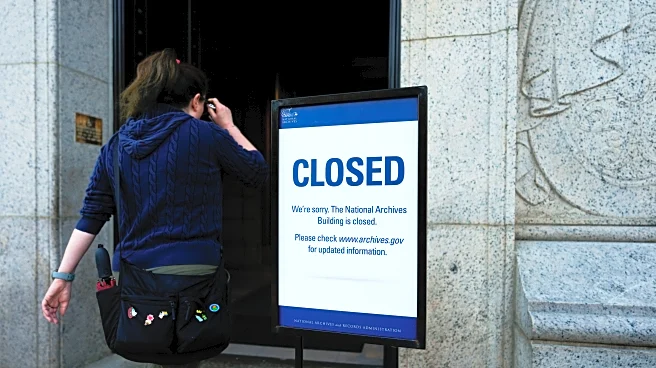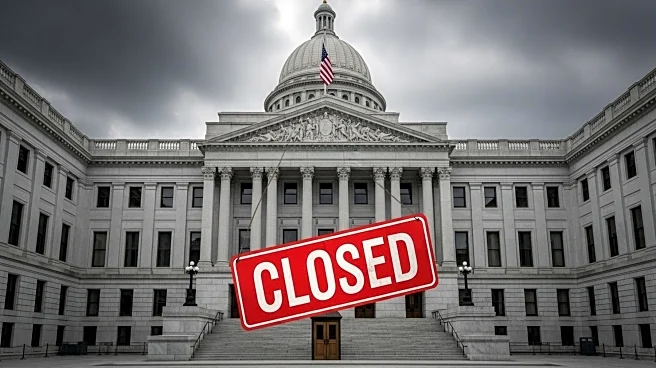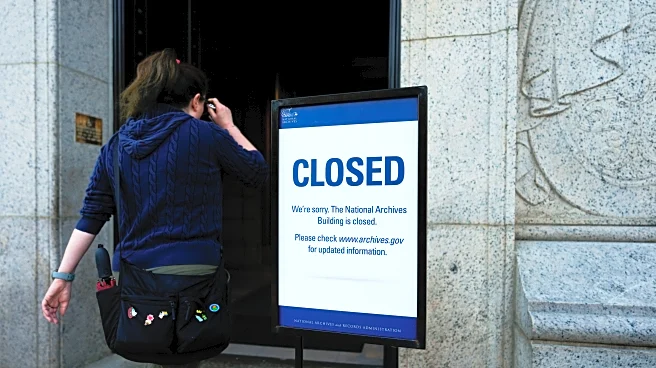What is the story about?
What's Happening?
The U.S. government has entered a shutdown as Senate Democrats remain steadfast in their demands to maintain health care subsidies, which President Trump and congressional Republicans have dismissed. The shutdown, which began on Wednesday, has led to the furlough of approximately 750,000 federal workers, with the White House threatening mass layoffs. The impasse centers around the Democrats' insistence on funding health care subsidies under the Affordable Care Act, which are set to expire, causing insurance premiums to rise. Despite a Senate vote on a GOP plan to fund the government without these subsidies, the proposal failed, drawing some Democratic support but not enough to pass.
Why It's Important?
The shutdown highlights the deep political divide over budget priorities, with significant implications for federal workers and services. The potential mass layoffs and furloughs could disrupt government operations and have a ripple effect on the economy. The Democrats' focus on health care subsidies underscores the importance of affordable health care access, a key issue for many Americans. The shutdown also tests the political strategies of both parties, with Democrats leveraging their position to push for health care funding, while Republicans aim to maintain fiscal control. The outcome could influence public perception and voter sentiment ahead of future elections.
What's Next?
As the shutdown continues, the economic impact is expected to grow, with potential delays in government services and benefit payments. The political standoff may lead to further negotiations, as both parties seek a resolution. The Democrats' demand for health care funding remains a central issue, and any compromise will likely involve discussions on this front. The situation also poses a challenge for President Trump, who faces pressure to reach a deal while maintaining his administration's budgetary goals. The shutdown's duration and resolution will depend on the willingness of both parties to negotiate and find common ground.
AI Generated Content
Do you find this article useful?














